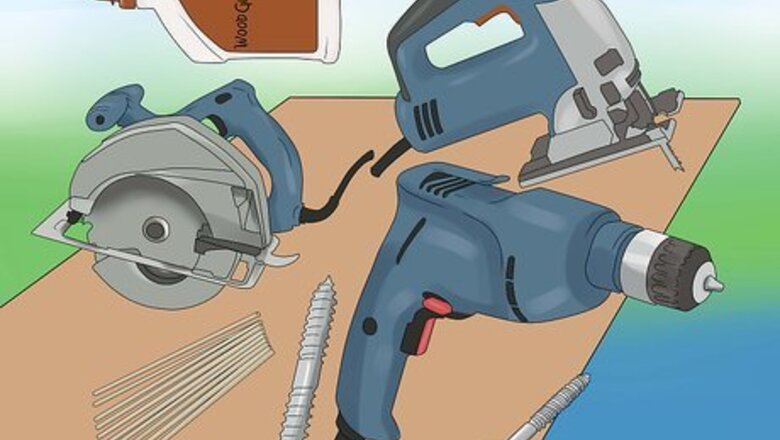
views
Wood Chair
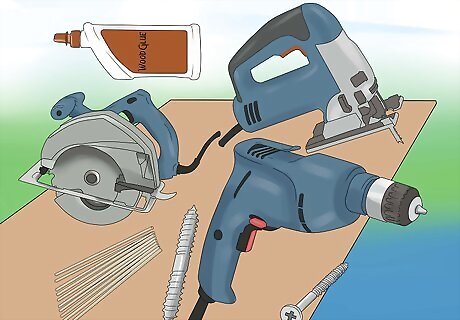
Gather your materials. You'll need 2x2s, 1x4s, a sheet of 1.5" plywood, 1/4" dowels, wood glue, 2.5" decking screws, double ended screws, a drill with a 1/4" bit, a jigsaw, and a circular saw. The saws can both be rented from major hardware stores and other local companies.
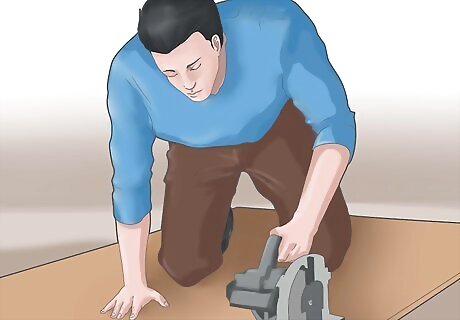
Cut the sides. You'll need to cut: Two 16.5" pieces of 2x2 Two 37" pieces of 2x2 Two 14" pieces of 1x4 One 14" piece of 1x4, then split that lengthwise into two long pieces.
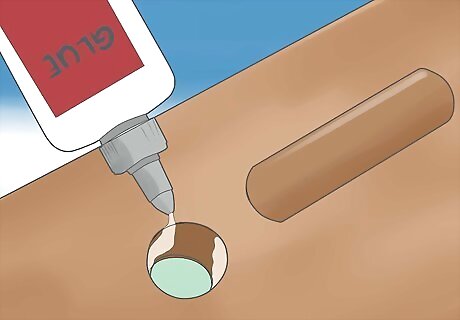
Assemble the sides. Drill 1/4" holes half-way into the 16.5" posts, 1 1/6" from the top and then 2 1/3" from the top. Cut identically spaced 1/4" holes into both ends of the 1x4 boards. Drill 1/4" holes half-way into the 37" posts, 15 1/3" from the bottom, then 14 1/6" from the bottom. Glue and then insert dowels into the holes. Then you can fit all of the pieces together to form the two sides of the chair. The side pieces should be flush with the tops of the short posts. Slide the split 1x4s 4" up from the bottom on either side piece and screw them into place with decking screws.
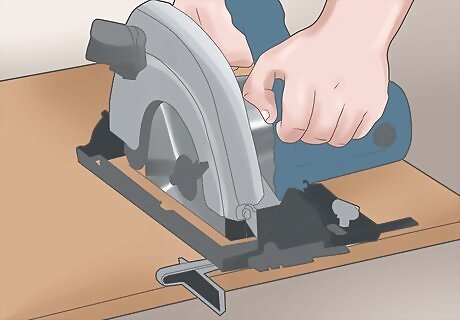
Prepare for the connections. Cut three pieces of 14" 1x4, and cut a 12" piece of 1x4 into 3 pieces. Cut a 17x17" square from the plywood for the seat. Then cut 1.5"x1.5" notches out of two of the corners of the board, to make room for the back posts. Drill 1/4" dowel holes into one of the 1x4s at the edge on one of the long sides (one hole centered and the other two 4 1/3" from each end of the board). Line up this piece with the seat piece on the side that has the notches. Mark the locations of the dowel holes from the 1x4 onto the seat piece between the two notches. Drill 1/4" dowel holes there as well. Drill 1/4" dowel holes, centered, into each of your 3 pieces created from the 1x4. Drill centered pilot holes in your posts for your decking screws 1 3/4" from the top of the short posts and 14 3/4 from the bottom of your tall posts.
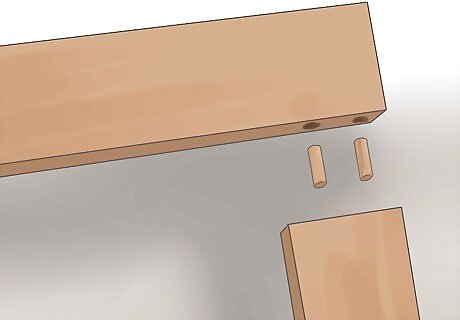
Build the chair back. Glue and insert dowels into both ends of the 3 pieces created from the 1x4. Then, insert them into the 1x4 and into the seat back. Allow the glue to set before proceeding.
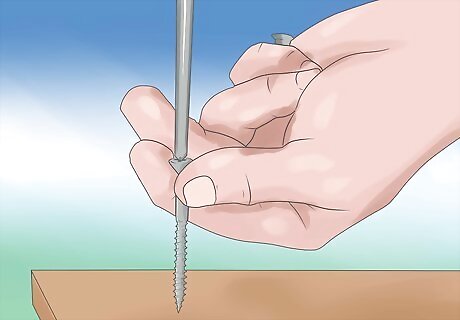
Insert the back/seat combination. Glue and then position the seat in place with the two side pieces below it, the back posts fit snugly into their notches. Insert the decking screws through the plywood and down into the center of the front posts.
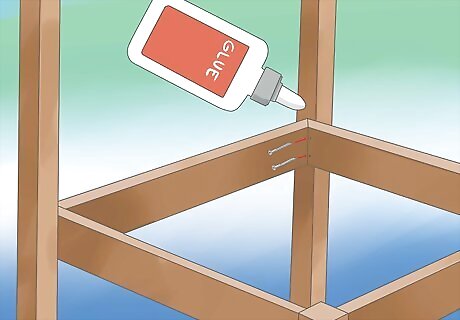
Secure everything in place. Glue and slide the two final aprons (front and back), and then screw them into place through the pilot holes you made earlier (passing through the posts and into the side of the apron). Then insert two more decking screws going through the seat and into the back apron, with the screw place in between the 3 vertical bars. You can create an even stronger connect with corner brackets on the inside of the chair, if you want to.
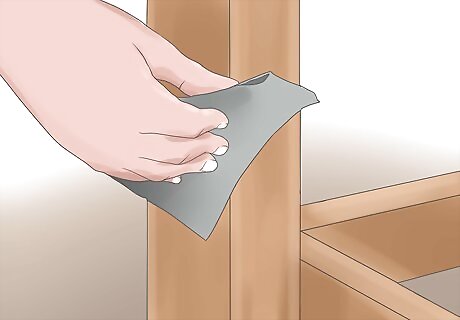
Sand and prepare the surface. Sand the enter surface of the chair to prepare it for staining or painting. You can also use this time to round out edges if you don't like the clean line look.
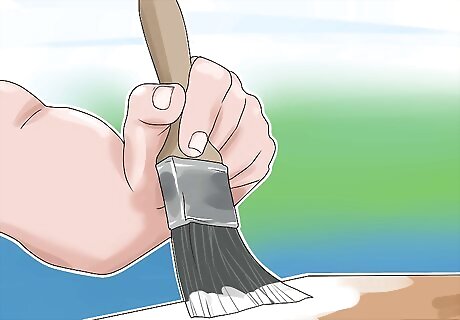
Paint the wood. Paint or stain the wood however you like. When it's dry, you're done! Enjoy your new chair!
Bean Bag Chair
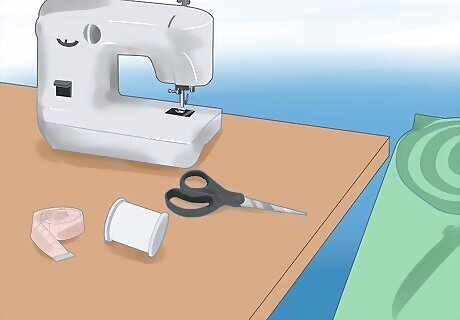
Gather your supplies. You'll need 5 yards (4.6 m) of fabric (assuming the bolts are 45" wide) for this project, preferably something strong but soft. You'll also need filling for the bean bag. You can buy filling at many furniture stores or you can make your own from cut up foam or mattress filling. Then you'll need a sewing machine, thread, scissors, and a measuring tape. Paper or cardboard to make a pattern also helps.
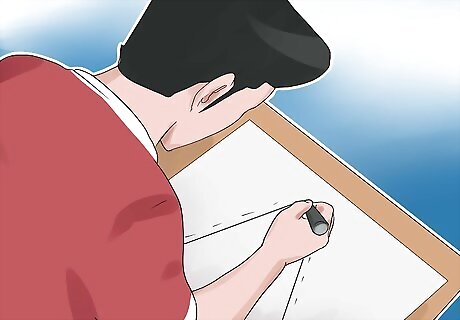
Make your pattern. Make a pattern on paper or cardboard. You're going to be making twelve rounded triangles with a height of 30" and a base of 20". On a large piece of paper or cardboard, first mark a straight line that is 20" long. Then, find the halfway point and measure 30" from that point. Check that your line is perfectly perpendicular using math or a protractor. Hand draw a soft curve from the 30" point to one end of the 20" line. Get it to the shape you want and then fold along the center line and cut it out, following the curve you created.
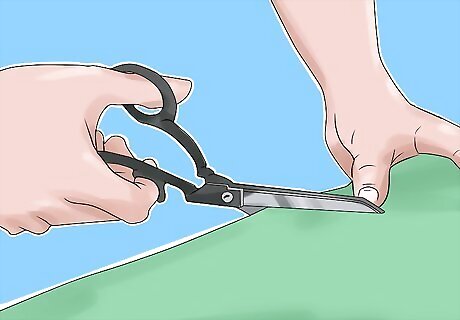
Cut your fabric. You should be able to get two of these triangles onto each yard of your fabric with a little room to spare (again, you will need 12 triangles). If you can, leave a half inch seam allowance around all of the edges. Cut out the fabric when you're ready. Remember: measure twice, cut once.
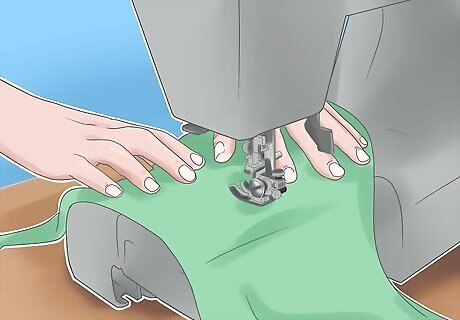
Sew the halves. Sew two triangles together along the bottom 20" side, with the right sides facing. Do this until you have six canoe-shaped panels. Then three of the panels together along the long sides so that a single piece of fabric is formed. Repeat this for the remaining three panels.
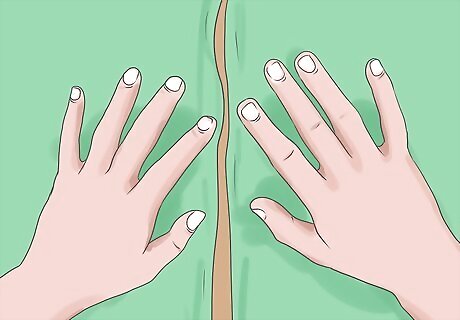
Attach the halves. Take these two pieces of fabric, pin them right sides together, and then sew all the way around, leaving a 6" gap to turn and fill the beanbag chair.
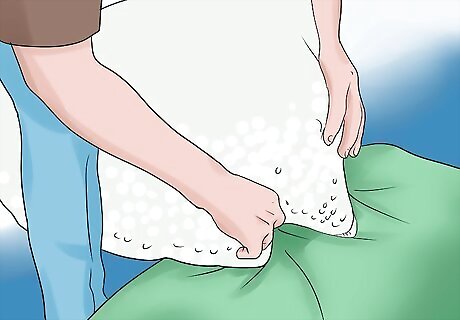
Fill the beanbag. Turn the fabric by pushing it through the hole, so that it is no longer inside out. You can now fill the bag by pouring your desired filling into the hole. Do not overstuff the bag....it needs to be comfy!
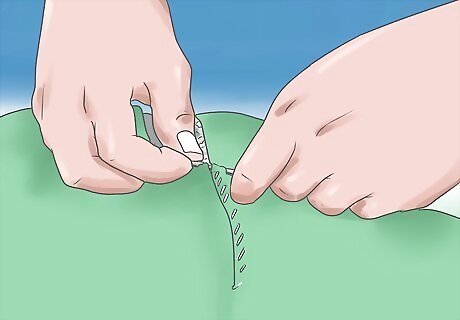
Close the hole. Use a whip stitch to close the hole. Enjoy your new beanbag chair.
PVC Beach Chair
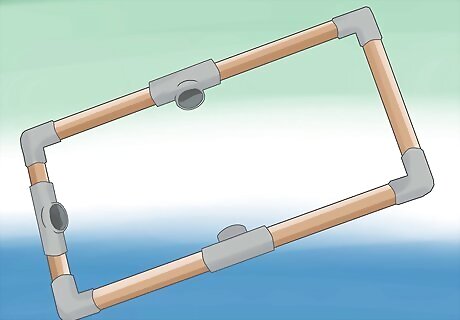
Make the vertical section. Join a 12" section of pipe with a 18" section of pipe using a T joint. Cap both ends in L joints. Make a second, identical piece. Join these two sides together at the L joint on end closer to the T joint using a 26" pieces of pipe. Make a separate piece with a T joint at the center and two 12" pieces. Then, join at the upper ends together with this piece. All pieces should be dry fit before doing any trimming. Your end shape should be a rectangle. If your pieces aren't fitting together right, they can be trimmed down. The long side T joints should be facing into the inside of the rectangle. The upper T joint will need to be adjusted but will likely be around a 45 degree angle from the line of the long side.
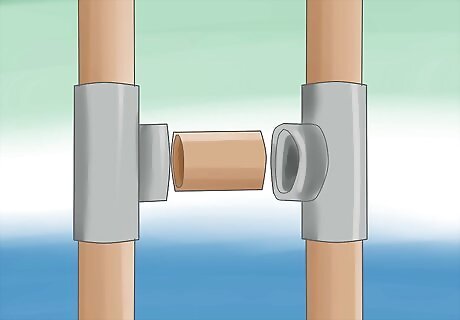
Create the joint. Place a 2" section of pipe into the long side T joints and cap with a mirrored T joint.
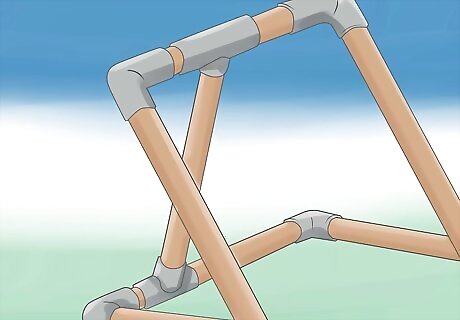
Make the horizontal section. Make the long sides the same as with the vertical section (12 and 18" pipe sections capped with L joints). However, join the ends closest to the center T joint with an 18" section and the other end with 8" sections and a T joint. You should now have two rectangles, one inside the other, and joined at their lower third point.
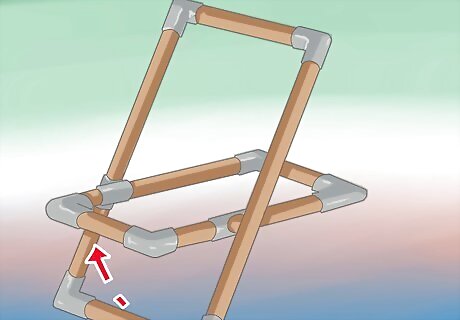
Measure for your desired angle. The seat is formed between the short portion of the horizontal section and the long portion of the vertical section. The chair rests on the long end of the horizontal section and the short end of the vertical section. Adjust the angle that the two pieces meet at until you like the angle of the back and seat. Measure the distance between the remaining T joints on the long sides needed to create the angle you want.
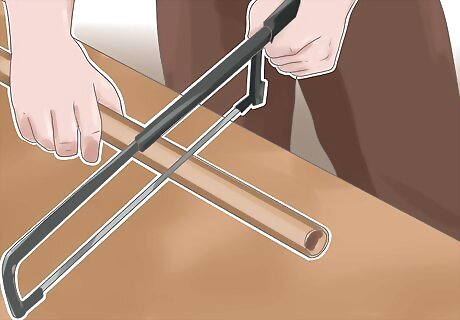
Cut and insert the back brace. Cut a piece of pipe to your desired length and insert it into the two T joints.
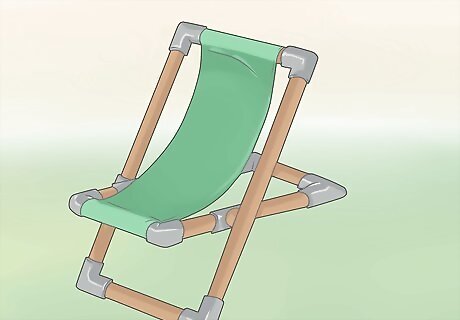
Create the sling. A sling which reaches between the top part of the chair and the front edge of the seat creates the space for you to sit down. You can make this sling out of fabric or you can even make it out of something like Duct tape. All it is is a long section of fabric with tubes at either end that you fit onto the PVC pipe. You can sew these tubes into place or you can even cheat and use iron on velcro.
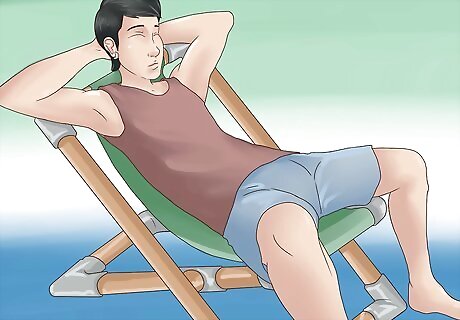
Enjoy! Your PVC beach chair is now done. Don't forget that you can change any of the measurements to make the chair larger or smaller, or even use thinner PVC pipe.
Other Options
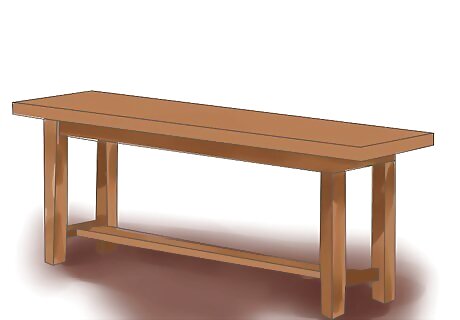
Build a bench. If none of these are quite what you're looking for, you could build any one of a number of benches found on wikiHow.

Build a stool. A stool is another popular type of chair and wikiHow has instructions for many variations.
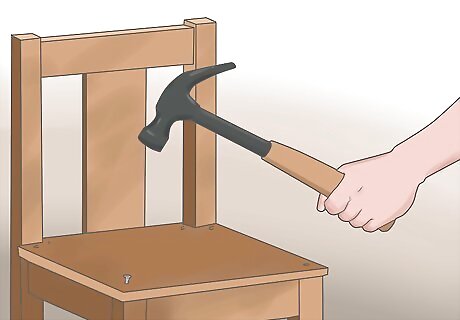
You can also repair existing chairs, if you're just looking to save money. You can do things like fix a papasan chair or reupholster your existing chairs.




















Comments
0 comment